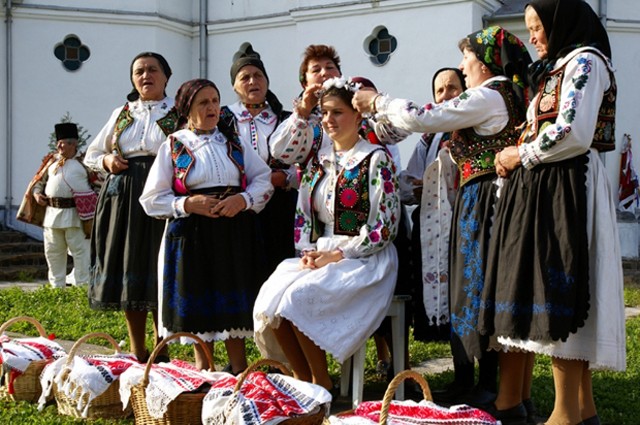Deț, otherwise called “share” or “bride cost”, is a conventional practice in Romanian culture that has been passed down for ages. It is a critical part of marriage and assumes a pivotal part in the existences of both the bride and man of the hour’s families. In this article, we will investigate the set of experiences, customs, and meaning of deț in Romanian culture.
History of Deț in Romania
The tradition of deț dates back to ancient times when it was a way for families to ensure their daughters’ financial security after marriage.
Previously, ladies were not permitted to acquire property, so deț’s filled in as a type of legacy for them. It was likewise viewed as a method for remunerating the bride’s family for the deficiency of their girl’s work and commitments to the family.
Over the long run, the act of deț’s advanced and turned out to be more intricate, with families contending to give the most luxurious gifts and endowments. In any case, with the ascent of socialism in Romania, the act of deț was prohibited, and relationships were directed with practically no trade of gifts or cash. After the fall of socialism in 1989, the practice of it was restored, and it keeps on being a fundamental piece of Romanian weddings today.
Customs and Rituals Associated with Deț
Negotiating the Deț
Before the wedding, the husband to be’s family visits the bride’s family to arrange the deț. This exchange cycle can be very extended and includes conversations about how much cash, gifts, and different things that will be traded. The bride’s family may likewise demand specific things, like furnishings, home devices, or even domesticated animals, as a component of the deț’s.
Preparing the Deț
Once the negotiations are complete, the groom’s family begins to prepare the deț. This involves gathering all the agreed-upon items and arranging them in a presentable manner. The deț is usually displayed in the bride’s family home for everyone to see.
Presenting the Deț
Upon the arrival of the wedding, the husband-to-be’s family presents the deț’s to the bride’s loved ones. This is finished in a proper function, with the two families and visitors in participation. The bride’s family reviews the deț’s to guarantee that every one of the settled-upon things are available and looking great. In the case of everything is good, the bride’s family acknowledges the deț’s, and the wedding service can continue.
Significance of Deț in Romanian Culture
Symbol of Love and Commitment
In Romanian culture, deț is viewed as an image of adoration and responsibility between the bride and lucky man. It is a way for the man of the hour to show his adoration and dedication to his future spouse by accommodating her and her loved ones. The bride’s acceptance of the dețs symbolizes her commitment to a lifelong partnership with her spouse.
Reinforcing Family Bonds
Deț’s isn’t simply an exchange between two families; it is likewise a method for reinforcing family bonds. The exchanges and arrangements for the deț’s include the two families cooperating, which assists with building connections and make a feeling of solidarity. The trading of gifts and cash likewise fills in as a manner to set the connection between the two families.
Ensuring Financial Security
As mentioned earlier, deț was initially a way to ensure the bride’s financial security after marriage. It is a tradition that continues despite women now having equal property inheritance rights. It involves exchanging furniture and household appliances to provide for the bride and her family, helping the newlyweds start their married life financially stable.
Read More: GET WHO GETS YOU DATING SITE CROSSWORD CLUE
FAQs about Deț in Romanian Culture
What is the difference between deț and a dowry?
It is the Romanian expression for endowment, however there are a few distinctions between the two. In Romanian culture, deț is given as a symbol of love and commitment. It can be given by either the bride’s or the groom’s family, depending on the society. On the other hand, endowment is often seen as a monetary exchange.
Is deț still practiced in modern-day Romania?
Yes, it is still an essential part of Romanian weddings today. Deț is still a significant aspect of marriage in Romanian culture.
Can the bride’s family refuse the deț?
The bride’s family may negotiate or reject the deț if they have any issues with the items or the amount offered, but usually, it is accepted as a sign of respect and honor.
What happens to the deț if the couple divorces?
If the couple divorces, the deț’s remains with the bride’s family. It is seen as compensation for the loss of their daughter’s labor and contributions to the household.
Are there any laws regulating the practice of deț in Romania?
No, there are no particular regulations overseeing the act of deț’s in Romania. Notwithstanding, there have been conversations about carrying out guidelines to forestall exorbitant or unjustifiable demands during the exchange interaction.
Conclusion
It is something beyond a customary practice in Romanian culture; it is an image of affection, responsibility, and family solidarity. Despite its evolution over time, the tradition of deț’s continues to hold great significance in Romanian weddings. As Romania continues to modernize, the practice of deț may change, but its importance in Romanian culture will remain.




